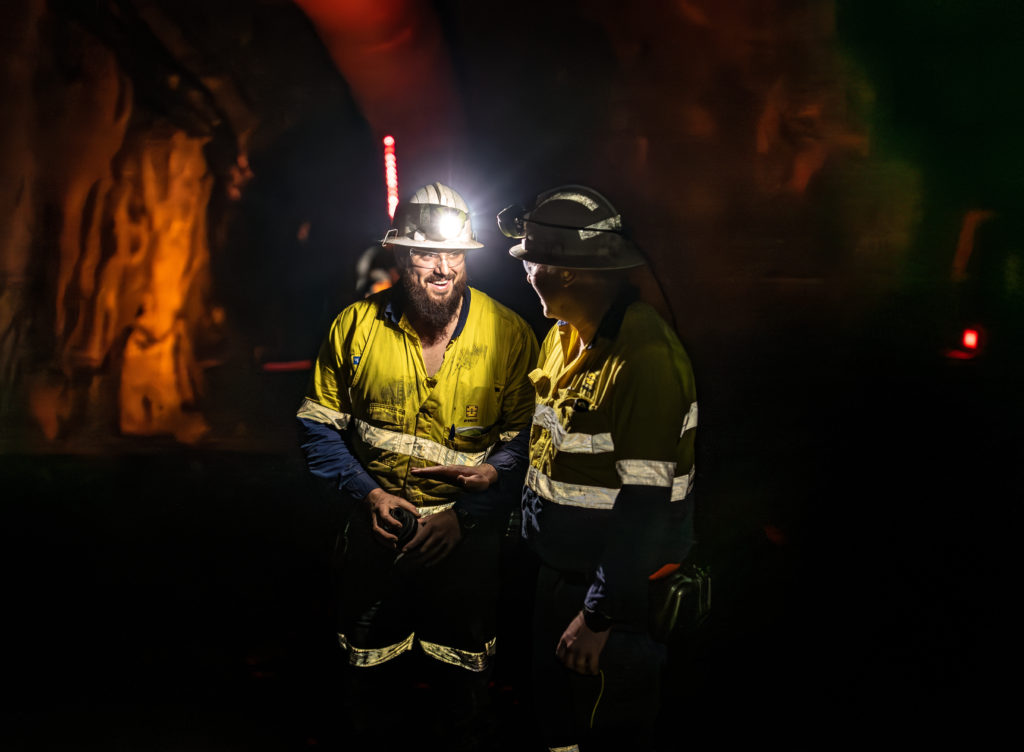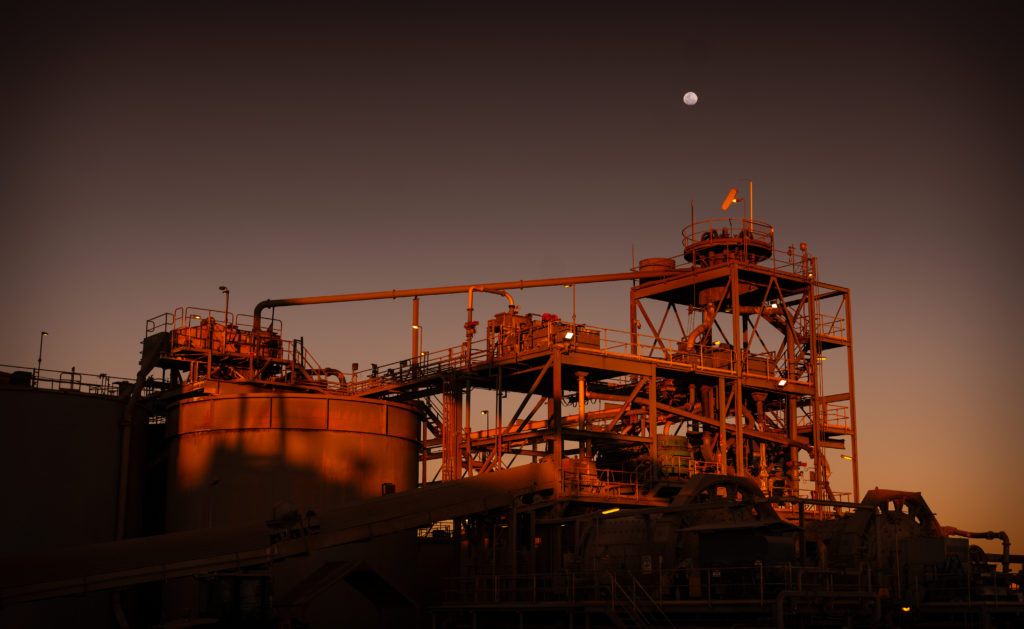
After several tough years, Australia’s gold producers are finally ready to enjoy their day in the sun.
Like their North American peers, Australian gold miners have been shunned by investors in recent years in favour of battery metal producers.
With the heat coming out of lithium, and the local nickel market almost wiped out, the gold sector is coming back into favour.
It’s occurring at a time when the Australian dollar gold price is trading at record levels of more than A$3,600 ($2,358) an ounce.
The pep in gold miners’ step was evident during a session featuring mid-tier gold producers at the Noosa Mining Investor Conference in Queensland in mid-July.
“It’s fair to say, it’s a great time to be a gold producer,” Ramelius Resources managing director Mark Zeptner said.
The comment was a far cry from only two years ago, when rampant cost inflation outrun increases in the gold price and led to significant margin squeeze.
The fortune of Western Australia’s gold sector can be quite closely linked to the state’s powerhouse iron ore industry, regardless of the gold price.
When iron ore is booming, the majors are able to pay more to secure the skilled labour they require, often at the expense of the lower margin gold sector.
This was particularly acute during the covid-19 pandemic, when WA’s borders closed, causing arguably the worst labour shortage the state had ever seen.
The state’s high-margin iron ore sector was also much more easily able to absorb the additional costs that came along with covid-19, including social distancing and testing.
“The labour and cost pressures that hit the WA mining industry during the pandemic have eased more recently,” Zeptner told MINING.COM.
Ramelius, a 250,000-300,000 ounce per annum producer, saw its production impacted by labour availability.
“Not only was there a rise in absenteeism due to illness, border closures meant widespread shortages of almost all roles across the industry,” Zeptner said.
“Road train drivers, in particular, were hard to come by. Given the hub and spoke model that Ramelius operates on where we are trucking from satellite deposits to a central mill, we felt this shortage more acutely than others.”
In early July, Ramelius, Capricorn Metals, Red 5, Westgold Resources and Regis Resources, reported preliminary June quarter results, highlighting improved cashflow generation.
Ramelius’ margins reached a record 48% in the 2024 financial year and are projected to increase to 55% in the current financial year.
The two largest Australia-based producers, Northern Star Resources and Evolution Mining, each reported record net mine cashflow, Evolution for the June quarter and Northern Star for the year to June 30, 2024.
Taking into account inflationary pressures of roughly A$110/oz, Evolution chief executive Lawrie Conway told analysts and reporters that the company’s cashflow increase was at a greater rate than moves in metal prices.
“Through the course of the year, we’ve seen the benefit of about A$400-500/oz on the gold price, so it’s certainly outweighing it,” he said.
“And when we look at the spot price today, it’s about A$460/oz higher than what we achieved last [financial] year, so from our expectations, if we were to see spot price maintained through the year, and we take the inflationary impact, we’re picking up A$350/oz better.
“The gold price is certainly beating off the inflationary impact on our cost base.”
Northern Star’s all-in sustaining costs for FY24 were A$1815/oz and the company has guided to AISC of A$1850-2100/oz for FY25, higher than the market expected.
Northern Star has already renegotiated some major contracts at higher costs and the higher gold price means an increase in royalty payments.
When questioned about costs on a conference call, managing director Stuart Tonkin said the guidance was potentially conservative.
“With the backdrop of the nickel reduction, lithium reduction, even some gas out of iron, there’s potentially some costs plateauing or even potentially some savings across energy costs and labour, so we haven’t baked that into anything across our costs,” he said.
While Evolution is yet to release FY25 guidance, the company is guiding to a 5% increase in labour costs in the coming financial year.
“And that’s about A$65-70/oz and the other costs are averaging around 3%, adding A$30-40/oz,” Conway said.
“As we’ve closed out the year, we’ve seen it pretty well lining up to that benchmarking we’ve done in the mining sector.”
Conway said the recent 0.5% increase in Australia’s superannuation (retirement pension) guarantee also played a part in rising wages.
A higher gold price inevitably leads to cost creep as companies mine more marginal ounces.
Tonkin said Northern Star had added lower grade tonnes to its mine plan as they were now “materially profitable” but acknowledged that even a small drop in grade would lead to higher AISC.
“But when the goal post is at A$3500 an ounce and you’re doing reserves at A$3000 and resources at A$2500, there’s a lot of headroom for profitable material that’s in and around the areas that we’re mining,” he said.
“If you look across the sector, I think we’re still pretty healthy compared to the average of increases that you’re starting to see.
“I’m not saying we’re the best of the worst bunch, I’m just saying it is what happens when the gold price goes up.”
Evolution has two operations each in New South Wales and Queensland and one each in WA and Ontario.
Its Mungari operation in WA experienced staff turnover rates of up to 30% during the pandemic.
“If we look at Mungari, over the last six months, their turnover rate and ability to fill roles has reduced and improved, in that order,” Conway said.
Conway said recent job cut announcements by BHP and Fortescue meant more people would become available in the WA workforce.
“From our perspective, we see that as a positive for Mungari, but that’s probably what we’re going to have to track over the next six months compared to what we saw in the last six months when these things hadn’t actually started to take place,” he said.
Northern Star is already seeing lower vacancy and turnover rates after multiple nickel mines closed.
“It’s sad to say but we’re beneficiaries of that retraction, but it also was unique that all the cycles peaked at once, when we had two years of the border locked, that we had iron firing, lithium firing, nickel firing and gold firing all at same time with the inability to get important labour and the state was short 25,000 resources workers,” Tonkin said.
“That’s why you got cost escalation, so this is the opposite side of that hill.”
Luke Creagh was formerly the chief operating officer of Northern Star but now runs smaller gold producer Ora Banda Mining.

He’s seen firsthand how much harder it is to attract workers to a single-asset junior in a turnaround phase.
“Before, we’d put a LinkedIn post or an ad out and get zero replies, and now we get meaningful applications, which is really good,” Creagh told MINING.COM.
“But I still think there’s a skills shortage across the board for your technical people like engineers, which the industry has to solve through training.”
Creagh said people seemed to be more aware of commodity risk given the job losses in nickel.
“It’s not all rosy across every part of the sector now and the cost of living is starting to bite a lot of people,” he said.
“Job security previously wouldn’t have ranked in the top five things people are worried about, but I think job security would now almost be number one.”
Against the backdrop of the mid-tier producers’ newfound swagger is a litany of gold company failures in recent years.
A number of high-cost mines shut down, and others, including Wiluna Mining Corporation and Navarre Minerals, collapsed.
The most recent collapse was Calidus Resources, which went into voluntary administration in late June due to high debt, just two years after opening its Warrawoona gold mine in WA.
Ora Banda has had its doubters as the company’s Davyhurst mine, east of Kalgoorlie, has claimed several previous operators.
Creagh admitted it had been stressful trying to execute a turnaround with a tiny budget, limited team, and against the macroeconomic backdrop in WA.
“In under two years, we went from zero undergrounds to finding, starting and getting one to commercial production and finding another that’s just about to start, so it’s been remarkably successful on a small budget,” he said.
“Now we’re into the fun stage, because we’re through the fixing stage – it’s finished – the next 12 months is when we really start generating strong cashflows from the underground.”
The record gold price has come at the perfect time for Ora Banda, with production set to rise by 30% in the next 12 months and costs to fall by more than 25%.
“It’s a great place to be at the moment, for sure,” Creagh said.
“The gold price is awesome and it looks strong for the foreseeable future, which is great for the gold companies.”